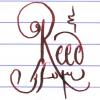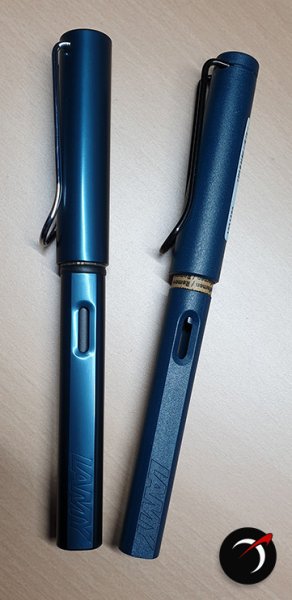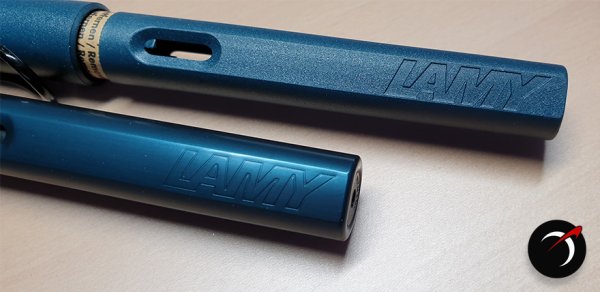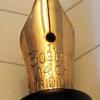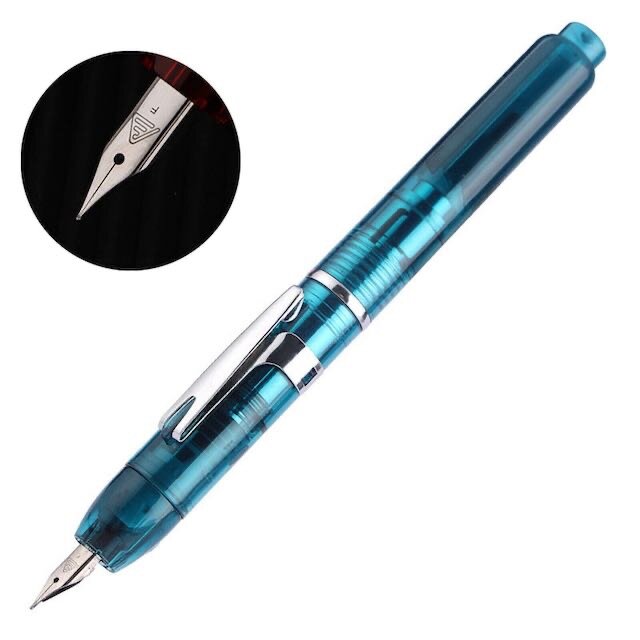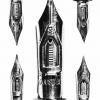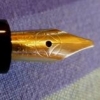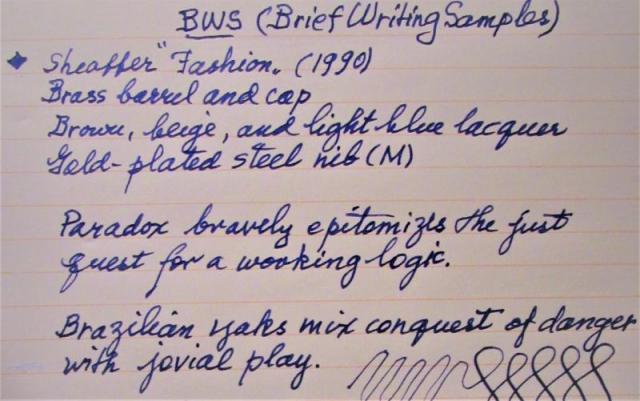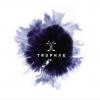Search the Community
Showing results for tags 'comparison'.
-
-
- moulin rouge
- jacques herbin
-
(and 3 more)
Tagged with:
-
Which of the three fountain pens is the best, overall, in your opinion? (Do not keep the price in mind, as for some abnormal reason each of them costs almost the same here, with Jinhao 65 being just a little cheaper than the rest.)
-
Anyone able to compare the CH 912 FA nib and the regular Pilot Falcon nib? I recently purchased the Falcon and now I'm having buyer's regret hearing that the FA nib on the Custom Heritage 912 and the Custom 742 are even better.
- 42 replies
-
I have 2 black inks that I like a lot. Aurora Black and Pilot Iroshizuku Take Sumi. I've decided to compare them and figure out which one is my favorite, because I rarely use black ink and technically just want one. As a result of the comparison, I'm more confused than before I started. They bo...
- 16 replies
-
rollerball Pilot V-Ball Vs Uni-ball Eye
Asteris posted a topic in It Writes, But It Is Not A Fountain Pen ....
When not using my Fp, my choice of writing on good paper has always been the Pilot V-Ball 0.5mm Blue . Yesterday I was in a stationery store and I picked up the Uni-Ball Eye Fine Blue, since i wanted to try it out and compare to the pilot's single use rollerball. I do not have any good photos, so I... -
So, at one point of another... we have all said.. "Wow, I wish I could get THAT ink".. but is discontinue/expensive/unobtanium .. etc So, here is the place where you should come and check if "THAT" ink has a Doppelgänger (look-alike, double, one who nearly or completely resembles another).. I wil...
- 468 replies
-
Some people can wield a big, fat stub and get amazing results. Not me. I'm a sloppy writer and still learning basic penmanship. I rotate my pens and stubs don't like that. I write fast, and stubs don't always forgive me for it. Just for fun, I made a quick comparison of the stubs that I have in my c...
-

comparison COMPARISON: Platinum Curidas vs Lanbitou 3088
donnweinberg posted a topic in Fountain Pen Reviews
This is a review and comparison of competing brands of essentially the same fountain pen -- the Platinum Curidas and the Lanbitou 3088. After Platinum began selling its relatively recent Curidas model in 5 transparent colors, the Chinese pen maker, Lanbitou, came out with it's version of the Curida... -

Leonardo Officina Italiana Momento Zero vs. Ensso Italia - SHOOTOUT
lfmarsan posted a topic in Fountain Pen Reviews
Hi all, These two models have already been reviewed in the forum, much better than I would be able to do. However, after having acquired the Ensso Italia Aluminum recently I’ve realized that both are veeery similar and I wanted to make a short shootout (I’m borrowing the term from Stephe...-
- leonardo
- momento zero
-
(and 2 more)
Tagged with:
-
Montblanc Legrand VS Inoxcrom Caravel This is a traslation that I did (sorry for my english) from the original post of a friend called Manuleon in a different forum. I have his authorization to put this translation here.
-
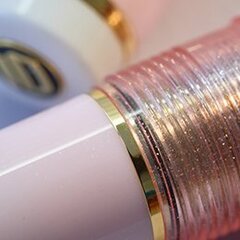
Japanese Pen Nib Widths Comparison Reference Table
Intensity posted a topic in Fountain & Dip Pens - First Stop
On my recent trip to Japan I was able to play with fountain pen tester displays by Platinum and Pilot with pre-filled pens and supplied paper. Upon returning, I had been meaning to make a comparison with some Western nibs and generic writing implements. Unfortunately I only have a Sailor EF nib at... -
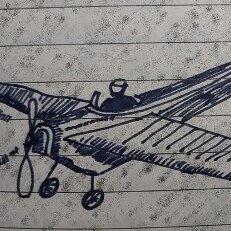
KWZ IG Blue-black and R&K Salix fading and aging...and other blues.
Dimy posted a topic in Ink Comparisons
Disclaimer first: This test does not focus on fading under direct sun or UV exposure, it focuses on normal change in color that will be observed on these inks in what I assume is how most keep their work. Also I will try to keep things as consistent as I can but some variations may occur during the...- 70 replies
-
- kwz ig blue-black
- comparison
-
(and 4 more)
Tagged with:
-
Every fountain pen enthusiast have a happy day, when his/her getting the door ring or call that the package with fountain pen is delivered I had such DAY earlier this week, when my new vintage Pelikan 100N with short cap top was delivered.. Short prehistory. I collecting vintage pelikans more then...
-
If you had the chance, which pen would you get so that you enjoy writing and call it a "keeper"
- 34 replies
-
- pelikan
- comparison
-
(and 2 more)
Tagged with:
-
Since J. Herbin released the beautiful Rouge Hematite as the first in their the-new 1670 Anniversary line it has been through several iterations. The first release was, in my eyes, as close to perfection as Rouge Hematite could ever be; deep and rich without being dark or dull, shimmery and sparkl...
- 40 replies
-
- j herbin
- rouge hematite
-
(and 4 more)
Tagged with:
-
Hello again to all my FPN friends, I happened to have 2 pens of similar flow and nib size inked with these and thought it might be helpful to compare them. Both are iron-gall inks and somewhat similar in color. However, at least in my experience, Hero 232 is much drier than Pelikan 4001 Blue-Black...
-

Review: Platinum 3776 Century Sf (Soft-Fine) Versus A Field Of Flex Comparison
terminal posted a topic in Fountain Pen Reviews
Platinum 3776 Century Black with a Soft-Fine nib Is the Platinum soft-fine a 'real' flex nib? I seek to answer that question... I can trace my purchase of this pen to a seed planted by Leigh Reyes and her enthusiasm for the Platinum SF. She named it one of her 2012 pens of the year, and then post... -
So I was planning to buy a nakaya medium nib, then I saw this review https://www.youtube.com/watch?v=uQSfX91oAC4 by Mr. Brown. As you can see in the video the regular medium seems very dry and hard as a nail. Then I saw the soft medium, it seems like it is the nib I really want. A little bit flexibl...
- 7 replies
-
- nakaya
- neo standard
-
(and 6 more)
Tagged with:
-
To celebrate the act of writing, here are photo reviews of two 'slim' pens (under 10 mm around at the grip). Notice that, with slip-on caps, 'threads' at the grip are not an issue, so the pens are equally smooth to hold. Also, though the pens may vary in size and shape, they are all about the same i...
-
This is one of my favorite recent nib comparison shots - I guess because it has my favorite pen in it, and shows off its massive scale! Anybody prefer the size of a Platinum or similar pen, or is bigger always better, like the Pilot Namiki Emperor here??
-
- nibs
- comparison
-
(and 3 more)
Tagged with:
-
Could someone offer a brief or comprehensive comparison of nibs that come with flagship pens from the popular premium brands? Say, Montblanc 149, Pelikan M1000, Sailor Custom Urushi etc.
- 12 replies
-
Hello guys, Hope all of you are having a lovely day! I've been wanting to experience some Chinese pens and I really liked the design of these two pens. However, in regards of performance, which one would you recommend? If you have any other suggestions, I'd really appreciate your help! )
- 2 replies
-
- baoer 388
- jinhao 992
-
(and 3 more)
Tagged with:


